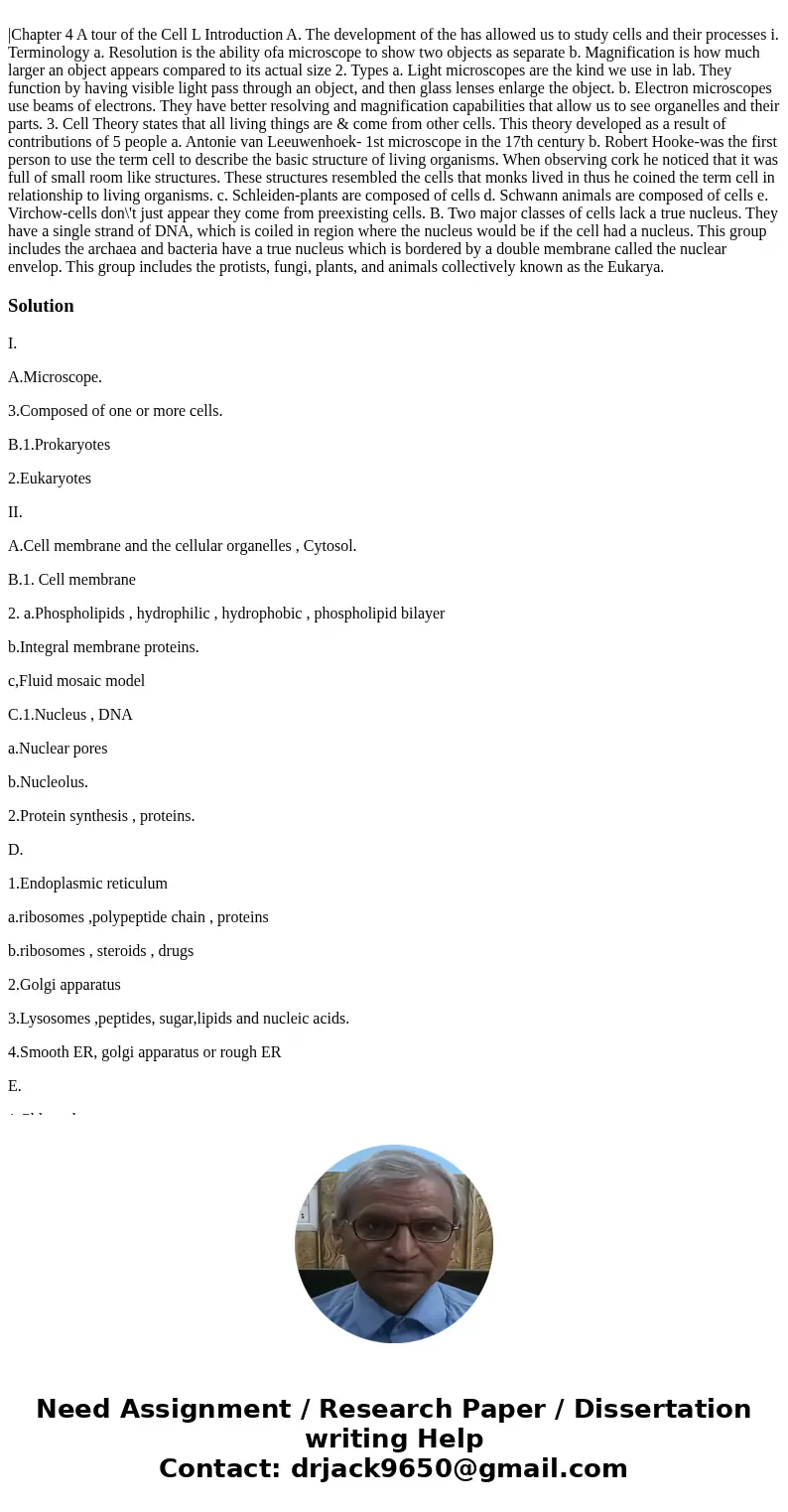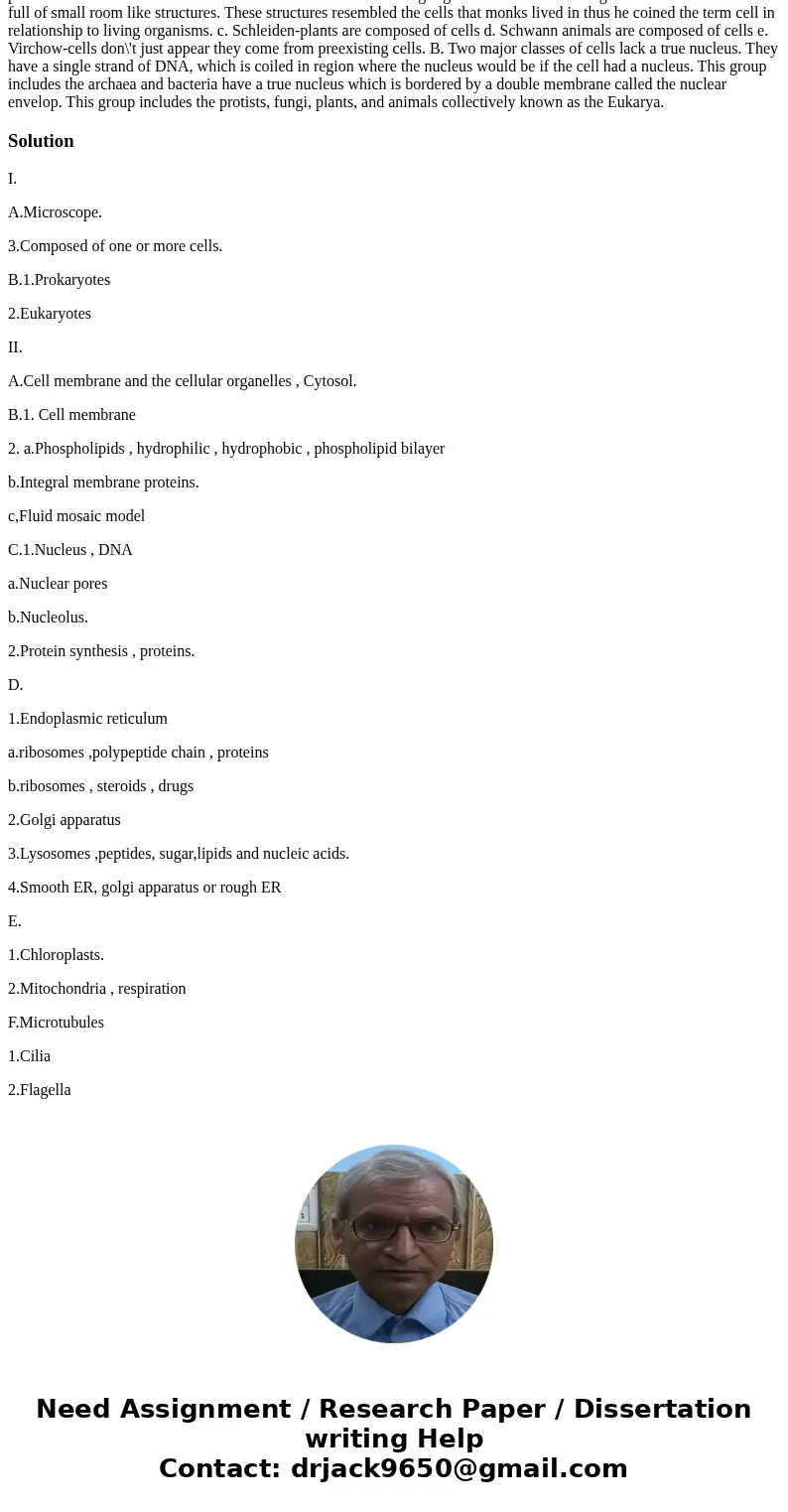|Chapter 4 A tour of the Cell L Introduction A. The development of the has allowed us to study cells and their processes i. Terminology a. Resolution is the ability ofa microscope to show two objects as separate b. Magnification is how much larger an object appears compared to its actual size 2. Types a. Light microscopes are the kind we use in lab. They function by having visible light pass through an object, and then glass lenses enlarge the object. b. Electron microscopes use beams of electrons. They have better resolving and magnification capabilities that allow us to see organelles and their parts. 3. Cell Theory states that all living things are & come from other cells. This theory developed as a result of contributions of 5 people a. Antonie van Leeuwenhoek- 1st microscope in the 17th century b. Robert Hooke-was the first person to use the term cell to describe the basic structure of living organisms. When observing cork he noticed that it was full of small room like structures. These structures resembled the cells that monks lived in thus he coined the term cell in relationship to living organisms. c. Schleiden-plants are composed of cells d. Schwann animals are composed of cells e. Virchow-cells don\'t just appear they come from preexisting cells. B. Two major classes of cells lack a true nucleus. They have a single strand of DNA, which is coiled in region where the nucleus would be if the cell had a nucleus. This group includes the archaea and bacteria have a true nucleus which is bordered by a double membrane called the nuclear envelop. This group includes the protists, fungi, plants, and animals collectively known as the Eukarya.
I.
A.Microscope.
3.Composed of one or more cells.
B.1.Prokaryotes
2.Eukaryotes
II.
A.Cell membrane and the cellular organelles , Cytosol.
B.1. Cell membrane
2. a.Phospholipids , hydrophilic , hydrophobic , phospholipid bilayer
b.Integral membrane proteins.
c,Fluid mosaic model
C.1.Nucleus , DNA
a.Nuclear pores
b.Nucleolus.
2.Protein synthesis , proteins.
D.
1.Endoplasmic reticulum
a.ribosomes ,polypeptide chain , proteins
b.ribosomes , steroids , drugs
2.Golgi apparatus
3.Lysosomes ,peptides, sugar,lipids and nucleic acids.
4.Smooth ER, golgi apparatus or rough ER
E.
1.Chloroplasts.
2.Mitochondria , respiration
F.Microtubules
1.Cilia
2.Flagella


 Homework Sourse
Homework Sourse